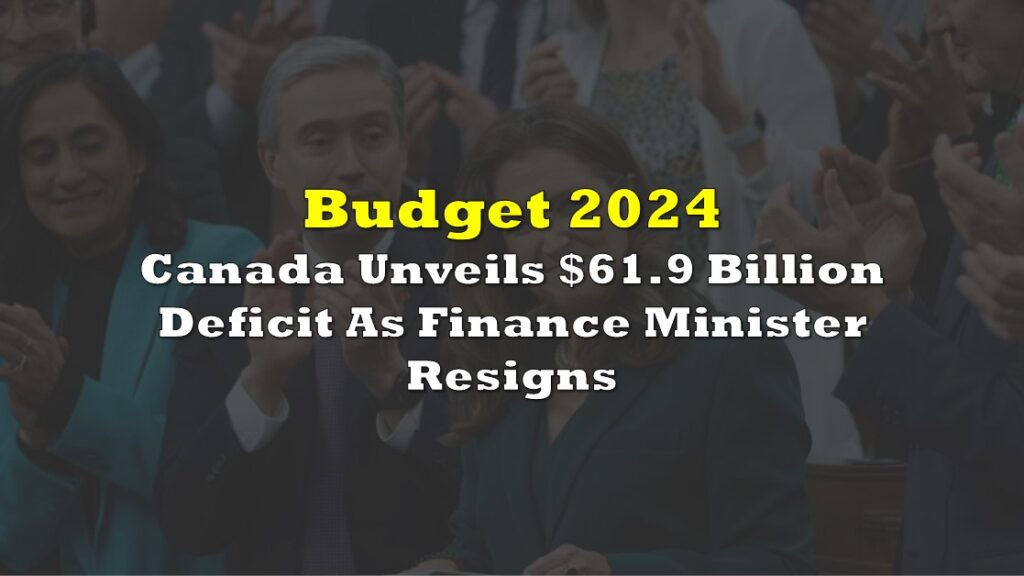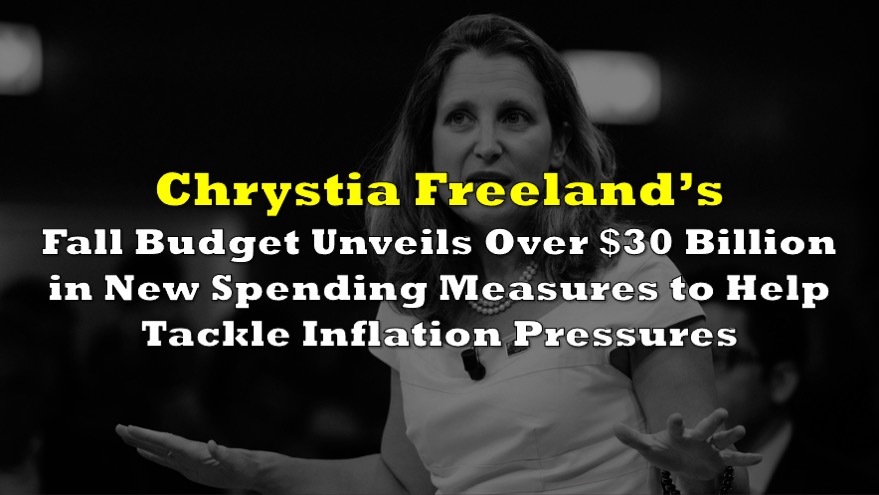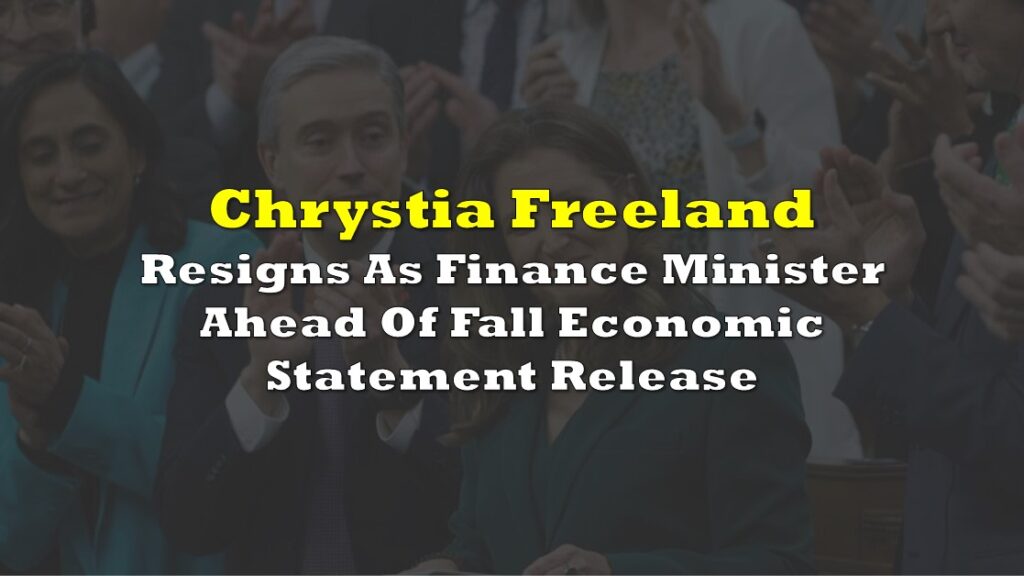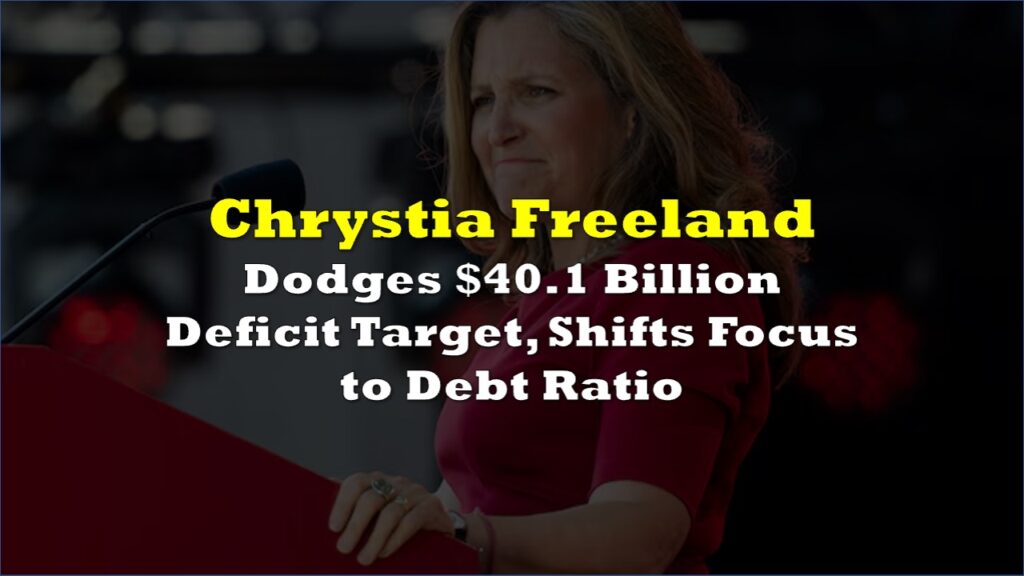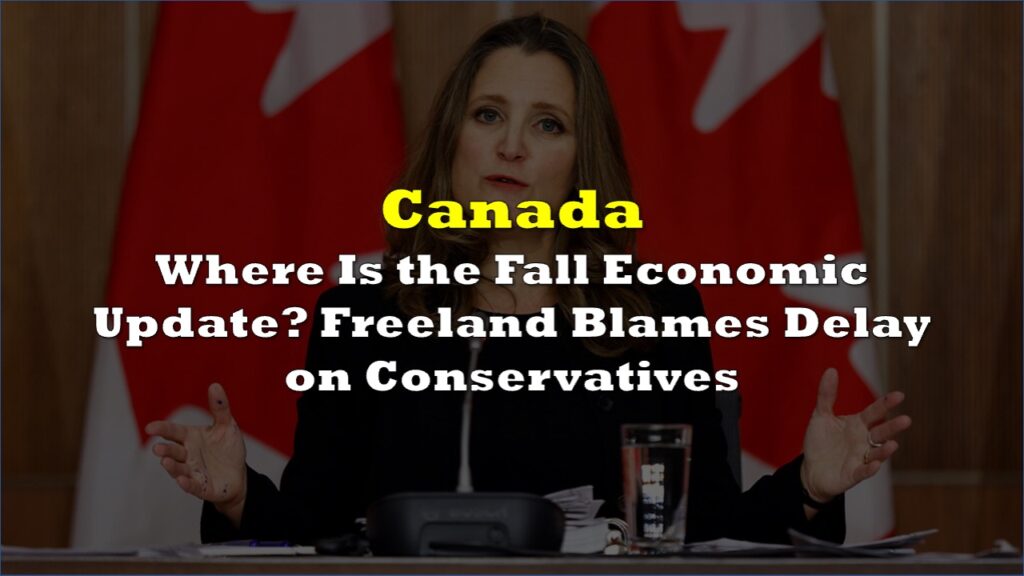In a day marked by political upheaval and economic concern, Canada’s federal government released its 2024 Fall Economic Statement, revealing a $61.9 billion deficit for the 2023-24 fiscal year — over $20 billion beyond initial projections. The statement outlined significant new spending commitments, investment incentives, and responses to mounting global pressures, particularly trade threats from the United States.
Yet, much of the focus was overshadowed by Finance Minister Chrystia Freeland’s abrupt resignation, an event that threw the Trudeau government into chaos and further underscored Canada’s fragile economic standing.
The release of the Fall Economic Statement, traditionally a highly structured event, was anything but routine. Minutes before reporters were set to analyze the embargoed document, Freeland announced her resignation in a sharply worded letter directed at Prime Minister Justin Trudeau. In the letter, Freeland cited irreconcilable differences over the government’s economic strategy, criticizing “costly political gimmicks” and emphasizing the need for fiscal restraint in preparation for a potential tariff war under U.S. President-elect Donald Trump after the latter’s promise to impose 25% tariffs on Canadian imports.
Freeland’s departure is not just a personal political loss; it signals growing instability within the Trudeau government at a time when Canada faces mounting economic headwinds. By day’s end, Dominic LeBlanc, the newly sworn-in finance minister, was left to defend a document his predecessor clearly questioned. The political spectacle overshadowed the fiscal update itself, a critical misstep at a moment requiring public and investor confidence.
But stepping aside from the political brouhaha for a minute, the FES in itself spells a impending crisis under the current administration.

Deficit crisis
The federal government’s failure to meet its $40 billion deficit target represents a significant fiscal blow. According to the FES, the 2023-24 deficit surged to $61.9 billion, a consequence of rising expenditures on Indigenous claims ($16.4 billion), lingering COVID-19 costs ($4.7 billion), and inflationary pressures.
The FES states that the the deficit would have been roughly $40.8 billion if not for these extraordinary costs, defending its fiscal track record. The government projects a decrease to $48.3 billion for 2024-25, but fiscal experts remain skeptical about Ottawa’s ability to rein in spending.
In her 2024 Budget, Freeland introduced self-imposed “fiscal guardrails,” including promises to keep the deficit below $40.1 billion for 2023-24 and to maintain a declining debt-to-GDP ratio.
While Ottawa narrowly kept its debt-to-GDP ratio within bounds, the margin was slim. The ratio now stands at 42.1%, with a forecasted dip to 41.9% in 2024-25. Critics argue that these figures leave little room to respond to looming economic shocks.
Adding to the concerns is Canada’s net debt, which is projected to rise to $1.4 trillion by 2025. Despite reassurances that Canada’s debt-to-GDP remains the lowest in the G7, the figure masks the uncomfortable reality of increasing debt loads and higher borrowing costs amid global economic uncertainty.
Investment incentive
Despite grim fiscal projections, the government’s economic strategy pivots towards stimulating investment, particularly in infrastructure and critical industries. The Trudeau government is walking a fiscal tightrope, defending increased spending while signaling a shift toward growth-oriented policies. The FES includes $20 billion in new spending over the next six years, largely targeting business investment, housing construction, and border security.
One of the most significant announcements in the FES is the extension of the Accelerated Investment Incentive. The measure, which allows businesses to claim an enhanced capital cost allowance for eligible property, will be reinstated for five years starting January 2025. Ottawa hopes this will encourage businesses to invest in clean technology, manufacturing equipment, and other growth-driving sectors.
“The Accelerated Investment Incentive will be fully reinstated to allow qualifying businesses to deduct up to three times the normal first-year capital cost on eligible property,” the FES notes, underscoring its aim to attract capital investment.
Critics argue, however, that while incentives are promising, they are unlikely to reverse Canada’s productivity stagnation in the near term. Fred O’Riordan, tax policy leader at EY Canada, praised the pivot but cautioned against optimism. “It’s a step in the right direction, but Canada still faces significant challenges in attracting and retaining private capital,” he said.
Moreover, the FES emphasizes attracting private capital. A major regulatory change includes removing the 30% investment cap on Canadian pension funds, a move that could unlock billions for domestic investment. Former Bank of Canada Governor Stephen Poloz, tasked with examining pension fund reforms, called the decision “essential” for competing in a globalized economy.
Housing affordability
Housing affordability remains central to the government’s economic agenda, yet the FES offers incremental measures rather than transformative solutions. The government commits $6 billion through the Canada Housing Infrastructure Fund to accelerate home construction and improve housing supply.
Despite these investments, affordability challenges persist. The FES acknowledges that housing costs remain the largest expense for Canadians, with mortgage interest rates and rents continuing to strain household budgets. Ottawa projects that recent policies, including immigration adjustments and increased construction, will ease demand and close the housing supply gap by 45% by 2030.
However, housing advocates argue the measures fall short of addressing the crisis. “We’re not seeing the bold reforms required to increase housing density, cut red tape, or significantly improve productivity in construction,” said Sahir Khan, Executive Vice President of the University of Ottawa’s Institute of Fiscal Studies and Democracy.
Yet critics question whether these investments will yield immediate relief for struggling Canadians. Despite wage growth outpacing inflation for 21 consecutive months, affordability remains a core issue. Real GDP per capita has stagnated as population growth — fueled by immigration — outpaces economic output. The government’s two-year pause on population growth from immigration is expected to ease some pressures, but results may take years to materialize.
Tariff war
Trump’s re-election has sent shockwaves through Canada’s economic outlook. Trump’s proposed 25% tariff on Canadian imports threatens to cripple key sectors, including manufacturing, agriculture, and energy.
The FES allocates $1.3 billion over six years to bolster border security and respond to U.S. concerns about drug smuggling, particularly fentanyl. Investments include new surveillance technologies, helicopters, and drones, although specific spending plans remain vague.
The government’s broader trade strategy emphasizes reciprocity, promising to retaliate against unfair measures while strengthening supply chain resilience. “The government will use all available tools to defend Canada’s economic security,” the FES states, hinting at potential counter-tariffs. However, observers remain unconvinced that Ottawa’s response will deter Trump.
Meanwhile, provinces remain divided. Ontario Premier Doug Ford has vowed to protect provincial exports, while Alberta Premier Danielle Smith refuses to endorse retaliatory measures that could disrupt energy markets.
The FES presents an ambitious yet uncertain plan for Canada’s economy. While Ottawa touts its investments in infrastructure, housing, and productivity, the soaring deficit and fiscal slippage cannot be ignored.
“Canada’s net debt-to-GDP ratio remains the lowest in the G7, and the government is committed to maintaining this advantage,” the government declares in its statement, touting Canada’s fiscal resilience.
However, critics argue that Canada’s long-term economic health depends on addressing structural challenges, such as lagging productivity and rising interest obligations.
Information for this story was found via CBC and the sources and companies mentioned. The author has no securities or affiliations related to the organizations discussed. Not a recommendation to buy or sell. Always do additional research and consult a professional before purchasing a security. The author holds no licenses.





